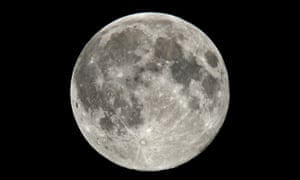Russia
and the United States have agreed to cooperate on a Nasa-led programme
to build the first lunar space station, part of a long-term project to
send humans to Mars.
The US space agency said earlier this year that it was exploring a programme called the Deep Space Gateway, a multi-stage project to push further into the solar system.
The project envisages building a crew-tended spaceport in lunar orbit that would serve as a “gateway to deep space and the lunar surface,” Nasa has said.
Nasa has been far from coy in its ambitions to send humans to orbit Mars by the 2030s, and subsequent plans to colonise of the red planet. But plans to return to the moon have waxed and waned with the US administration.
While George W Bush was keen to see humans on the moon again by 2020, Barack Obama ditched the plan and focused on plans to visit Mars, including a mission to test the necessary technology by capturing a boulder from the surface of an asteroid and bringing it into lunar orbit.
Now, it seems, it’s all change again. With the Trump administration,
asteroid missions have fallen from favour: with a spaceport orbiting the
moon, crewed visits to the lunar surface are once again on the menu.
On Wednesday the Russian space agency Roscosmos announced that a cooperation agreement had been signed at an astronautical congress in Adelaide.
“The partners intend to develop international technical standards which will be used later, in particular to create a space station in lunar orbit,” the Russian agency said in a statement.
The Russians and Americans would cooperate to build the systems needed to organise scientific missions in lunar orbit and to the surface of the moon, the agency added.
“Roscosmos and Nasa have already agreed on standards for a docking unit of the future station. Taking into account the country’s extensive experience in developing docking units, the station’s future elements will be created using Russian designs.”
Igor Komarov, Roscosmos’s general director, said no fewer than five countries were building their own rockets and systems.
“To avoid future problems over technical cooperation, part of the standards should be unified – for a possibility for various countries to work on their craft and dock to the international lunar station,” Komarov was quoted as saying in the statement.
Russia and the United States also discussed using Moscow’s Proton-M and Angara rockets to help create the infrastructure of the lunar spaceport, the statement said, adding that the main works were scheduled to begin in the mid-2020s.
Space exploration – including joint work on the International Space Station (ISS) – is one of the few areas where international cooperation between Russia and the US has not been marred by tensions over Ukraine and Syria.
The $100bn ISS, which has been orbiting Earth at about 17,000mph per hour since 1998, is the world’s largest space project.
The US space agency said earlier this year that it was exploring a programme called the Deep Space Gateway, a multi-stage project to push further into the solar system.
The project envisages building a crew-tended spaceport in lunar orbit that would serve as a “gateway to deep space and the lunar surface,” Nasa has said.
Nasa has been far from coy in its ambitions to send humans to orbit Mars by the 2030s, and subsequent plans to colonise of the red planet. But plans to return to the moon have waxed and waned with the US administration.
While George W Bush was keen to see humans on the moon again by 2020, Barack Obama ditched the plan and focused on plans to visit Mars, including a mission to test the necessary technology by capturing a boulder from the surface of an asteroid and bringing it into lunar orbit.
On Wednesday the Russian space agency Roscosmos announced that a cooperation agreement had been signed at an astronautical congress in Adelaide.
“The partners intend to develop international technical standards which will be used later, in particular to create a space station in lunar orbit,” the Russian agency said in a statement.
The Russians and Americans would cooperate to build the systems needed to organise scientific missions in lunar orbit and to the surface of the moon, the agency added.
“Roscosmos and Nasa have already agreed on standards for a docking unit of the future station. Taking into account the country’s extensive experience in developing docking units, the station’s future elements will be created using Russian designs.”
Igor Komarov, Roscosmos’s general director, said no fewer than five countries were building their own rockets and systems.
“To avoid future problems over technical cooperation, part of the standards should be unified – for a possibility for various countries to work on their craft and dock to the international lunar station,” Komarov was quoted as saying in the statement.
Russia and the United States also discussed using Moscow’s Proton-M and Angara rockets to help create the infrastructure of the lunar spaceport, the statement said, adding that the main works were scheduled to begin in the mid-2020s.
Space exploration – including joint work on the International Space Station (ISS) – is one of the few areas where international cooperation between Russia and the US has not been marred by tensions over Ukraine and Syria.
The $100bn ISS, which has been orbiting Earth at about 17,000mph per hour since 1998, is the world’s largest space project.

No comments:
Post a Comment